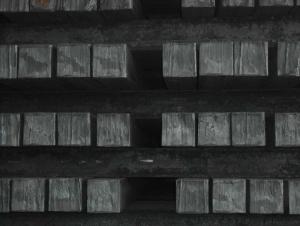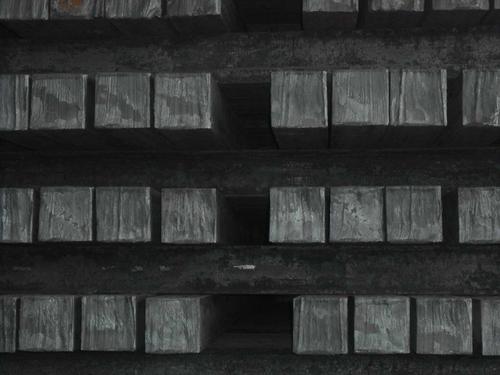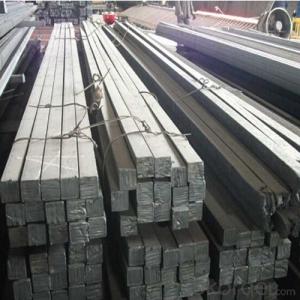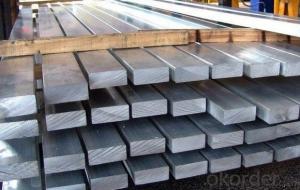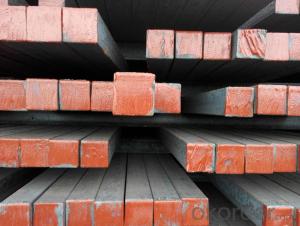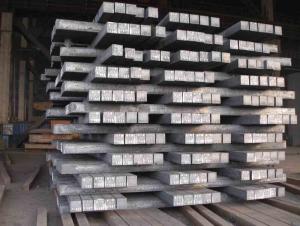Q235 Steel bilte steel bilte for construction
- Loading Port:
- Tianjin
- Payment Terms:
- TT or LC
- Min Order Qty:
- 10000 m.t.
- Supply Capability:
- 100000 m.t./month
OKorder Service Pledge
OKorder Financial Service
You Might Also Like
Product Description:
OKorder is offering Q235 Steel bilte steel bilte for construction at great prices with worldwide shipping. Our supplier is a world-class manufacturer of steel, with our products utilized the world over. OKorder annually supplies products to European, North American and Asian markets. We provide quotations within 24 hours of receiving an inquiry and guarantee competitive prices.
Product Applications:
Q235 Steel bilte steel bilte for construction are ideal for structural applications and are widely used in the construction of buildings and bridges, and the manufacturing, petrochemical, and transportation industries.
Product Advantages:
OKorder's Steel bilte are durable, strong, and resist corrosion.
Main Product Features:
· Premium quality
· Prompt delivery & seaworthy packing (30 days after receiving deposit)
· Corrosion resistance
· Can be recycled and reused
· Mill test certification
· Professional Service
· Competitive pricing
Product Specifications:
We offer Square Steel Bar with grade Q195 / Q235
Specifications of Square Steel Bar:
-Standard: GB,
-Grade: Q195/Q235 or equivalent.
Chemical Composition:
-Chemical Composition. Q195
Standard | Grade | Element (%) | ||||
GB | Q195 | C | Mn | S | P | Si |
0.06~0.12 | 0.25~0.50 | ≤0.050 | ≤0.045 | ≤0.30 | ||
-Chemical Composition. Q235
Standard | Grade | Element (%) | ||||
GB | Q235B | C | Mn | S | P | Si |
0.12~0.20 | 0.30~0.70 | ≤0.045 | ≤0.045 | ≤0.30 | ||
Measures and Tolerances of Square Steel Bar:
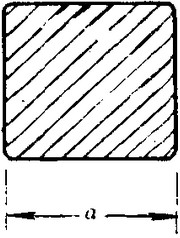
(The section of Square Steel Bar)
-The length of a side and the theoretical weight of Square Steel.
Length of a side(a, mm) | Theoretical weight(kg/m) | Length of a side(a, mm) | Theoretical weight(kg/m) |
6 | 0.283 | 32 | 8.04 |
7 | 0.385 | *33 | 8.55 |
8 | 0.502 | 34 | 9.07 |
9 | 0.636 | *35 | 9.62 |
10 | 0.785 | 36 | 10.17 |
11 | 0.950 | 38 | 11.24 |
12 | 1.13 | 40 | 12.56 |
13 | 1.33 | 42 | 13.85 |
14 | 1.54 | 45 | 15.90 |
15 | 1.77 | 48 | 18.09 |
16 | 2.01 | 50 | 19.63 |
17 | 2.27 | 53 | 22.05 |
18 | 2.54 | *55 | 23.6 |
19 | 2.82 | 56 | 24.61 |
20 | 3.14 | *58 | 26.4 |
21 | 3.46 | 60 | 28.26 |
22 | 3.80 | 63 | 31.16 |
*23 | 4.15 | *65 | 33.17 |
24 | 4.52 | *68 | 36.3 |
25 | 4.91 | 79 | 38.49 |
26 | 5.30 | 75 | 44.16 |
*27 | 5.72 | 80 | 50.24 |
28 | 6.15 | 85 | 56.72 |
*29 | 6.60 | 90 | 63.59 |
30 | 7.06 | 95 | 70.85 |
*31 | 7.54 | 100 | 78.50 |
Notes:
1, The theoretical weights in the list, base on the density of 7.85 g/cm3.
2, The numbers with *mean that they are not regulars or we don’t offer them.
-The allowed tolerance of Square Steel:
Length of a side(mm) | Allowed Tolerance | ||
Group1 | Group2 | Group3 | |
5.5~7 | ±0.20 | ±0.30 | ±0.40 |
7~20 | ±0.25 | ±0.35 | ±0.40 |
20~30 | ±0.30 | ±0.40 | ±0.50 |
30~50 | ±0.40 | ±0.50 | ±0.60 |
60~80 | ±0.60 | ±0.70 | ±0.80 |
80~110 | ±0.90 | ±1.0 | ±1.1 |
110~150 | ±1.2 | ±1.3 | ±1.1 |
150~190 | ―― | ―― | ±2.0 |
190~250 | ―― | ―― | ±2.5 |
Usage/Applications of Steel Square Bar:
-The Square Steel is normally used as structure steel.
-Row material for other structure steel like steel angles, channels, I-beams, H-beams, etc…
Packaging & Delivery of Steel Square Bar:
-Packing Detail: The products can be packed in bundles by steel wires.
-Marks:
1, Tag marks: the tag marks will be tied up to each bundle of the products. The information is usually including supplier’s logo and name, product name, made in China, products’ specifications, the painted color and other information requested by customers.
2, Color marks: we will paint both ends of the bundles of these products to make sure that they are more evident. It’s will be more convenient for the customers to distinguish them at the destination port.
-Delivery Detail: 30~45 working days after receive buyer’s T.T. or L/C.
Transportation:
-The products can be delivered by bulk vessel or by container. As for container, products with the length of 6m will be loaded in 20’ container, with 9m or 12m, in 40’ container.
-The maximum quantity of loading of container is 25 tons.
-The products usually are transported to the nearest port from the production place.
Payment:
-Invoicing on theoretical weight or actual weight a s customer’s request.
-FOB, CFR or CIF.
-Regular terms of payment:
1, 30% payment in advance, the remaining balance (70% payment) against the copy of B/L.
2, 30% payment in advance, the remaining balance (70% L/C) against the copy of B/L.
3, Negotiable.
FAQ:
Q1: How do we guarantee the quality of our products?
A1: We have established an advanced quality management system which conducts strict quality tests at every step, from raw materials to the final product. At the same time, we provide extensive follow-up service assurances as required.
Q2: How soon can we receive the product after purchase?
A2: Within three days of placing an order, we will begin production. The specific shipping date is dependent upon international and government factors, but is typically 7 to 10 workdays.
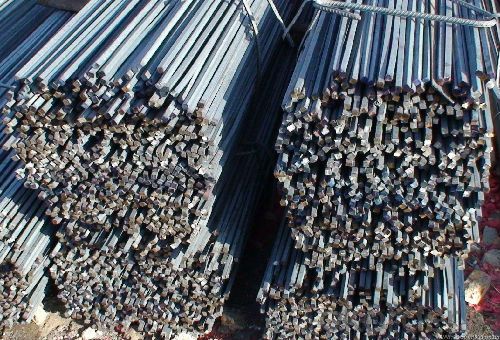
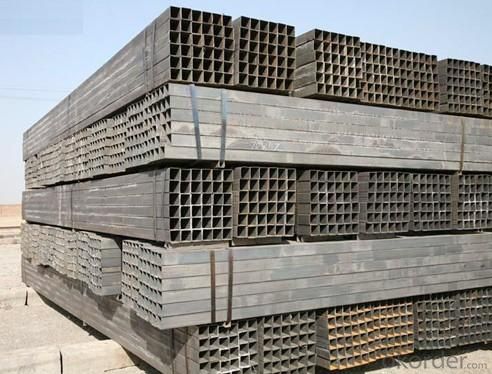

- Q: How do you use a steel square to find angles for mitered corners?
- To use a steel square for finding angles for mitered corners, start by placing the square against the corner with one leg flush along one side and the other leg extending along the adjacent side. Next, mark the angle on the material using the edge of the square as a guide. Repeat this process on the other side of the corner. The intersecting lines will indicate the correct angles for cutting the mitered corners.
- Q: What are some common uses for a steel square in furniture making?
- Some common uses for a steel square in furniture making include measuring and marking angles, checking for squareness and straightness, and transferring measurements for precise cuts and joinery. It is also useful for determining the centerline of a board, ensuring accurate layout and alignment during construction.
- Q: How do you use a steel square to lay out a tenon joint?
- Achieving a flawless and secure tenon joint can be accomplished by following these steps with a steel square: 1. Start by gauging the width and thickness of both the tenon and mortise pieces. These measurements will determine the appropriate tenon size. 2. Indicate the shoulder line on the tenon piece. This demarcation signifies the boundary between the joint's tenon and shoulder. Utilize the steel square's straight edge to ensure an impeccably straight line. 3. Measure the length of the tenon on the tenon piece. This measurement will dictate the mortise's required depth on the mortise piece. Employ the steel square to mark this measurement on the tenon piece. 4. Once the shoulder line and tenon length are marked, position the steel square against the tenon piece's edge, aligning it with the shoulder line. This alignment guarantees a perfect right angle cut for the tenon in relation to the shoulder line. 5. Utilize the steel square to designate the tenon's sides on the tenon piece. Simply place the steel square against the tenon piece's edge, aligning it with the shoulder line, and mark the tenon's width on both sides. 6. Subsequently, transfer the marks from the tenon piece to the mortise piece. Align the tenon piece with the mortise piece, ensuring the shoulder line coincides with the desired location, and use the steel square to transfer the width and length marks onto the mortise piece. 7. Lastly, employ a saw to cut along the marked lines on both the tenon and mortise pieces. The outcome should yield a tenon joint that is impeccably sized and aligned. By utilizing a steel square to establish a tenon joint, you can guarantee precise measurements and accurate angles, resulting in a robust and perfectly fitting joint. Remember to consistently verify your measurements and utilize sharp tools for optimal results.
- Q: Can a steel square be used for marking out dovetail joints?
- Yes, a steel square can be used for marking out dovetail joints. A steel square is a versatile tool commonly used in woodworking for measuring, marking, and checking the accuracy of right angles. When marking out dovetail joints, precision and accuracy are crucial, and a steel square can provide the necessary reference for ensuring the correct angles and dimensions are achieved. By aligning the square along the edges of the workpiece, it can help guide the marking of the dovetail angles and provide a straight edge for accurate cutting. However, it is important to note that while a steel square can be a useful tool, it is recommended to also use a dovetail marking gauge or a dovetail template to ensure the best results and maintain consistency throughout the project.
- Q: Can a steel square be used for checking the alignment of machinery?
- Yes, a steel square can be used for checking the alignment of machinery. The square's straight edges and right angles can help determine if the machinery is properly aligned or if any adjustments are required.
- Q: Can a steel square be used for checking the alignment of a belt grinder table?
- Yes, a steel square can be used for checking the alignment of a belt grinder table.
- Q: What are the common applications of a steel square in metal fabrication?
- A steel square, also referred to as a framing square or carpenter's square, serves as a versatile tool extensively used in metal fabrication for a wide range of purposes. Some of the typical applications of a steel square in metal fabrication encompass the following: 1. Layout and marking: The steel square is widely employed to precisely mark and lay out straight lines, angles, and measurements on metal surfaces. This aids in ensuring precise cuts and dimensions during the fabrication process. 2. Verification of right angles: One of the primary functions of a steel square is to verify if a joint or corner is perfectly square or at a 90-degree angle. This is crucial to achieve structural integrity and accuracy in metal fabrication projects. 3. Measurement and transfer of dimensions: Steel squares come equipped with rulers or scales along their edges, facilitating accurate measurement and transfer of dimensions. This proves particularly valuable when cutting or bending metal to specific sizes and shapes. 4. Machinery and tool setup: Steel squares are also utilized to align and set up various machinery and tools used in metal fabrication, such as saws, drills, and milling machines. They guarantee correct positioning and desired angles for the equipment. 5. Flatness inspection: In metal fabrication, it is of utmost importance to ensure that fabricated components possess flat and level surfaces. Steel squares can be employed to inspect the flatness of metal sheets or welded joints, enabling fabricators to make necessary adjustments. 6. Creation of miter cuts: Miter cuts, which involve angled cuts made on metal pieces to achieve precise joints, can be effortlessly executed using a steel square. By aligning the square with the desired angle, fabricators can accurately mark and cut metal at the correct angle. 7. Welding setup: Steel squares are frequently utilized in the setup and alignment of metal components during welding. They aid in positioning and aligning parts to achieve accurate and robust welds. In conclusion, a steel square is an indispensable tool in metal fabrication, offering a multitude of applications such as layout and marking, angle verification, dimension measurement and transfer, machinery setup, flatness inspection, miter cut creation, and assistance in welding setup. Its versatility and accuracy make it an essential tool for metal fabricators who strive for precision and excellence in their work.
- Q: Can a steel square be used for tile layout?
- Tile layout can definitely benefit from the use of a steel square. This tool, also referred to as a framing square or a carpenter's square, is incredibly versatile and has many applications in layout tasks. One of its main uses is for marking right angles and checking for squareness. When it comes to tile layout specifically, a steel square is great for ensuring that tiles are laid out in straight lines and at perfect right angles. It can also be used to measure and mark the starting point for tile installation, as well as to verify if the tiles are properly aligned and square throughout the installation process. However, it's important to remember that while a steel square is useful, it should be utilized alongside other tile layout tools like a chalk line or a laser level. This combination guarantees accurate and precise tile installation.
- Q: Can a steel square be used for pergola post layout and installation?
- Yes, a steel square can be used for pergola post layout and installation. Steel squares are commonly used for measuring and marking angles, which can be helpful for ensuring accurate placement and alignment of pergola posts.
- Q: Can a steel square be used for measuring miter cuts?
- Yes, a steel square can be used for measuring miter cuts. Steel squares are commonly used in woodworking and carpentry to ensure accurate measurements and angles, making them suitable for measuring and marking miter cuts.
Send your message to us
Q235 Steel bilte steel bilte for construction
- Loading Port:
- Tianjin
- Payment Terms:
- TT or LC
- Min Order Qty:
- 10000 m.t.
- Supply Capability:
- 100000 m.t./month
OKorder Service Pledge
OKorder Financial Service
Similar products
Hot products
Hot Searches
Related keywords
